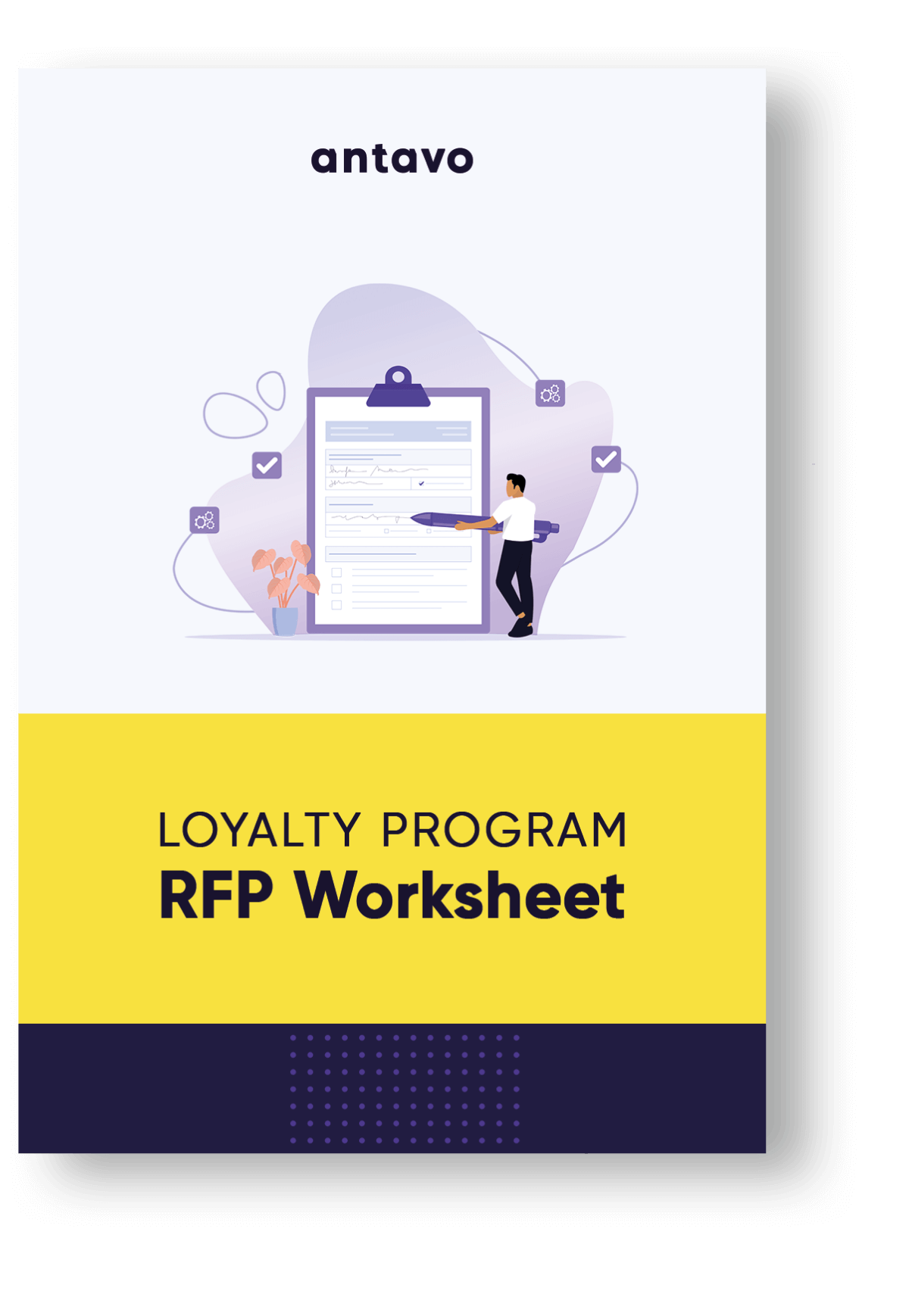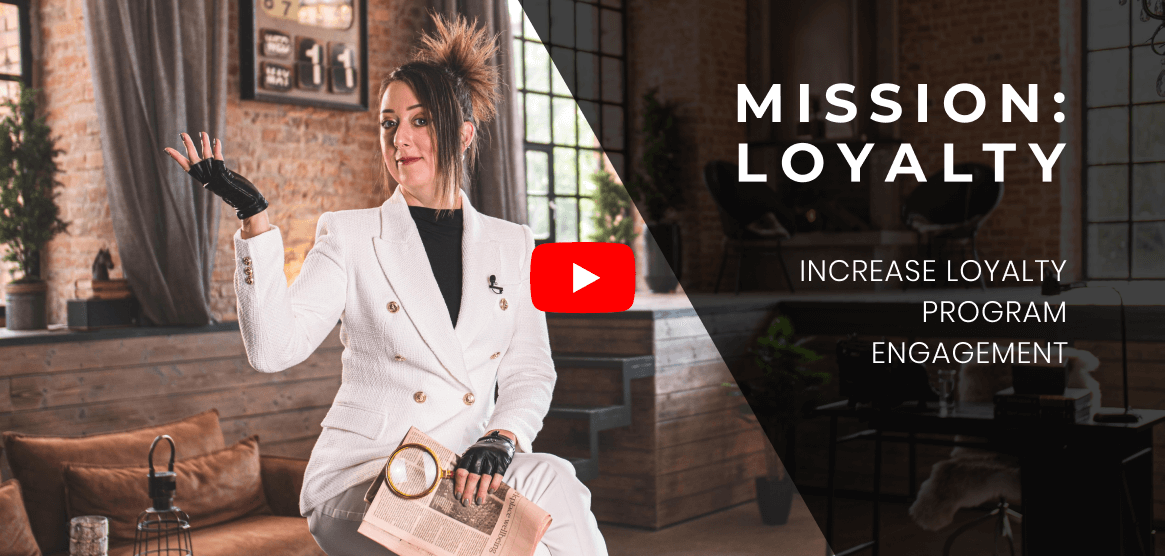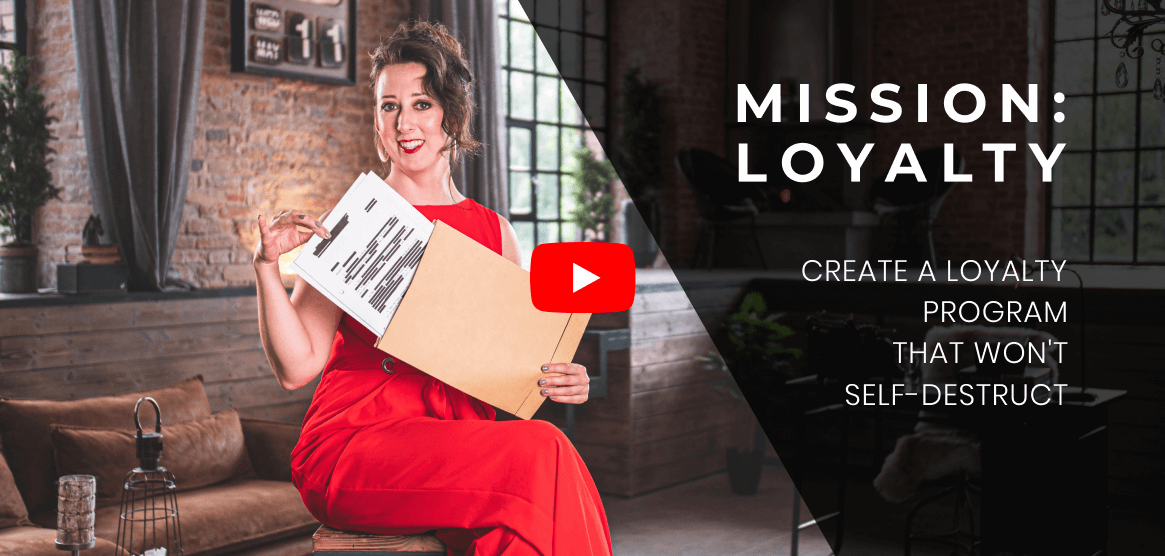The technology behind loyalty programs is like the lab coat-wearing scientists in a spy organization. They might be in the background, but at the end of the day, it’s their cool gadgets that help James Bond save the day. That’s why you should never underestimate the power and importance of loyalty program technology. But where should you start your research when you want to launch (or re-launch) your loyalty program? What options do you have to choose from? And how will you avoid common pitfalls?
Don’t let these questions bog you down. In this article, we will go over some best practices and dive into the pros and cons of various loyalty program technologies. We’ll also investigate the vendor selection process, in case you are looking to outsource it.
The Evolution of Loyalty Program Technology
In the beginning, there wasn’t much of a question on how to handle the technicalities of loyalty programs. The lack of businesses specialized in loyalty technology meant that companies had to handle everything in-house. Going the DIY route meant that companies had full control over the operation and development but, even at an early stage, this meant a lot of extra work for the team tasked with running the loyalty program.
Over time, companies started wondering: is it possible to outsource all of these tasks? And where there is a need, there is a service! That’s how the market for loyalty program technology was born.
Generally, you have two options if you wish to task a third-party company with taking care of technology. First, you can turn to a large marketing agency that will build the program and also handle day-to-day operations according to your wishes. This, of course, comes with a hefty price tag… so the other option is to turn to a technology vendor. Loyalty technology vendors provide the loyalty program platform and configure it, but your own employees will take over day-to-day management.
Hi everyone, we’re back in action with Mission Loyalty: your best connection for loyalty insights.
I’m one of those pros and cons people. For every major decision I make, you can be sure I have a piece of paper floating around with two columns full of the good and the bad.
The way most people consider their loyalty technology providers is no different. It’s all about the pros and cons!
So today I’m going to share the good, and the bad loyalty technology. And I promise not to be TOO biased towards loyalty technology vendors like ours. 🙂
So here’s today’s mission. And it’s a big one! I challenge you to find the right loyalty technology for your brand!
First, I’ll run you through the pluses and minuses of the three most popular ways to create a loyalty program: building a program in-house, hiring an agency to handle the work, and using a loyalty platform.
So here we go…
First off, Do It Yourself. This refers to building the program internally with your team of developers and marketers. It’s a great way to go if you’re a tech company at heart because you can build it exactly like you want it. But the drawbacks are numerous. DIY costs a lot of time and money. And you may not always have the right tools!
Building a loyalty program in house is a resource drain for companies that aren’t overflowing with UX researchers and tech talent. Also, the technology needs to be constantly developed and improved to stay in the game.
So if flexibility is a concern, you’re better off relying on outside expertise.
The second way to build a program is to hire an AGENCY to handle everything from building the concept through launch and operation.
An agency will combine its team’s expertise, creativity… and use their partners and their own technology… to create an alluring strategy and customized loyalty program from start to finish, while you sit back and relax.
The drawback here is that, because it’s outsourced, you will have less influence on the loyalty program. Plus it’s a big financial commitment.
Finally, the third popular approach is using THIRD-PARTY TECHNOLOGY. Over the long-term, opting for a loyalty platform from a vendor is a cost-effective way to get the program you envision.
But it does require effort to find the right partner — because not all providers are equal!
So first I’d like to distinguish between pure-play loyalty providers and jack-of-all-trades platforms that also offer marketing automation or other functions.
Get a head start on your vendor research by using trusted publications like Gartner’s Market Guide for Loyalty Management or Forrester’s Wave around Loyalty Program Technologies.
You should look for a loyalty technology that’s headless or API-first. That means that the loyalty experience can be more efficient – on your website, mobile app, even WeChat.
It should also be ”no-code”, meaning that the loyalty program’s structure and campaigns can be set up without programming knowledge.
And you should look for a platform that’s able to detect fraud.
Alright, now we’ve done a high-level comparison, but let’s talk data.
Here’s the Loyalty Intel!
In our global customer loyalty study, the amount of respondents with loyalty programs managed in-house or managed by a technology vendor were nearly equal. But when it came to satisfaction, there was a significant difference.
Less than half of respondents who manage their loyalty program in-house said they were satisfied with their loyalty program.
But, when we asked the same question to respondents who work with a vendor, that number jumped up to 63%.
So there’s a lot to be said about having an easily customizable solution.
If you’re starting your journey to building a loyalty program there are three key ingredients to making it successful.
The first ingredient is strategy. It’s a great approach to work with a loyalty consultant to hammer out the details of your loyalty structure, like point logic. And consultants can help you to select the right technology, too.
Or, you can work with industry organizations like the Customer Strategy Network, or The Loyalty People or Loyalty360.
The second ingredient is technology. That’s what we covered in this video: DIY, use an agency, or use a third-party provider.
And, finally, consider a system integrator like EPAM or Acxiom to help make implementation a much smoother process.
Thank you so much for watching today.
And if you’re ready to learn more about Antavo’s Enterprise Loyalty Cloud, visit antavo.com to see our product videos and documentation, or to request a demo of our platform.
See you next time on Mission: Loyalty.
The Challenges and Best Practices for Implementing Loyalty Program Technology
In your search for the best loyalty program technology, there’s one thing you should know: there is no such thing as “one-size-fits-all”. What’s considered the “best fit” should not be dictated by the market, but rather by your own needs. As such, loyalty program technology should always be customized according to the KPIs you wish to move, your brand identity, and the ways you want to engage your core audience.
Now, let’s take a deeper look at the three types of loyalty technologies.
1. Developing a Loyalty Program In House
In-house or DIY technology means that you have to dedicate your own resources to developing the loyalty program, from coding the loyalty engine to building the interface. On the plus side, the end result is tailored to your specific needs. The downside, however, is that there’s a higher risk of your technology — and innovation in general — stagnating.
Although delivering a custom platform that meets customer expectations is becoming more and more challenging as technology gets more sophisticated, a large number of brands still prefer this route. According to our Global Customer Loyalty Report 2023, 52.3% of loyalty programs are managed by in-house technology.
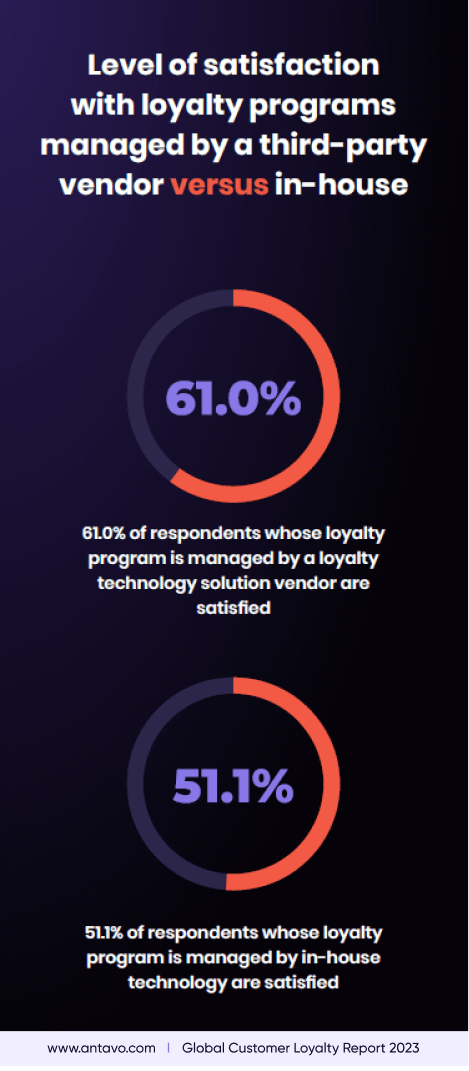
2. Hiring an Agency to Build Your Loyalty Program
If you choose an agency that has experience working with loyalty, you’re already off to a good start. Agencies can help you develop an attractive customized loyalty program, from start to finish, either by doing it themselves or partnering with a tech provider. Agencies can also manage all of the marketing communication around your rewards program. There’s one caveat, though: this approach costs a lot of money, as you’ll have to foot the bill for multiple services — not just the technology.
Going this route is best if you’re looking to save time or don’t want to dedicate your own team to running the program. An agency’s experience is also very valuable if you need help working out your loyalty program’s concept. They’ll also be able to share best practices and guide you along the way. It won’t be “set it and forget it”, however…if you choose an agency, they will still require your direction and input throughout the process.
Need some help taking the first steps for your loyalty program? Our concept worksheet includes all the topics and aspects you should think about.
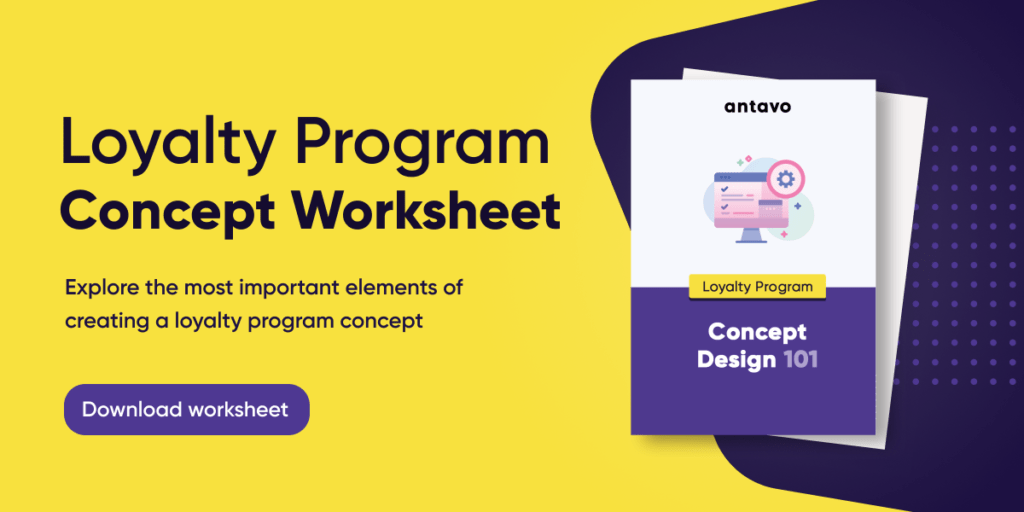
3. Using Loyalty Technology From a Third-Party Vendor
If you choose a third-party loyalty technology vendor, you’ll be licensing ready-made software. This kind of technology tends to be more sophisticated and come with loads of out-of-box capabilities. Plus, to stay competitive, vendors generally introduce new innovations constantly.
Third-party technology represents the golden middle: they require active planning and cooperation on the company’s behalf, yet the technology itself is readily available, so there is very little development required in order to launch. This is especially true for pure-play loyalty technology providers, which offer sophisticated features such as gamification, multiple tiers, and gamified surveys. And because companies are only paying for the technology, it’s more cost-effective than delegating the entire project to an agency.
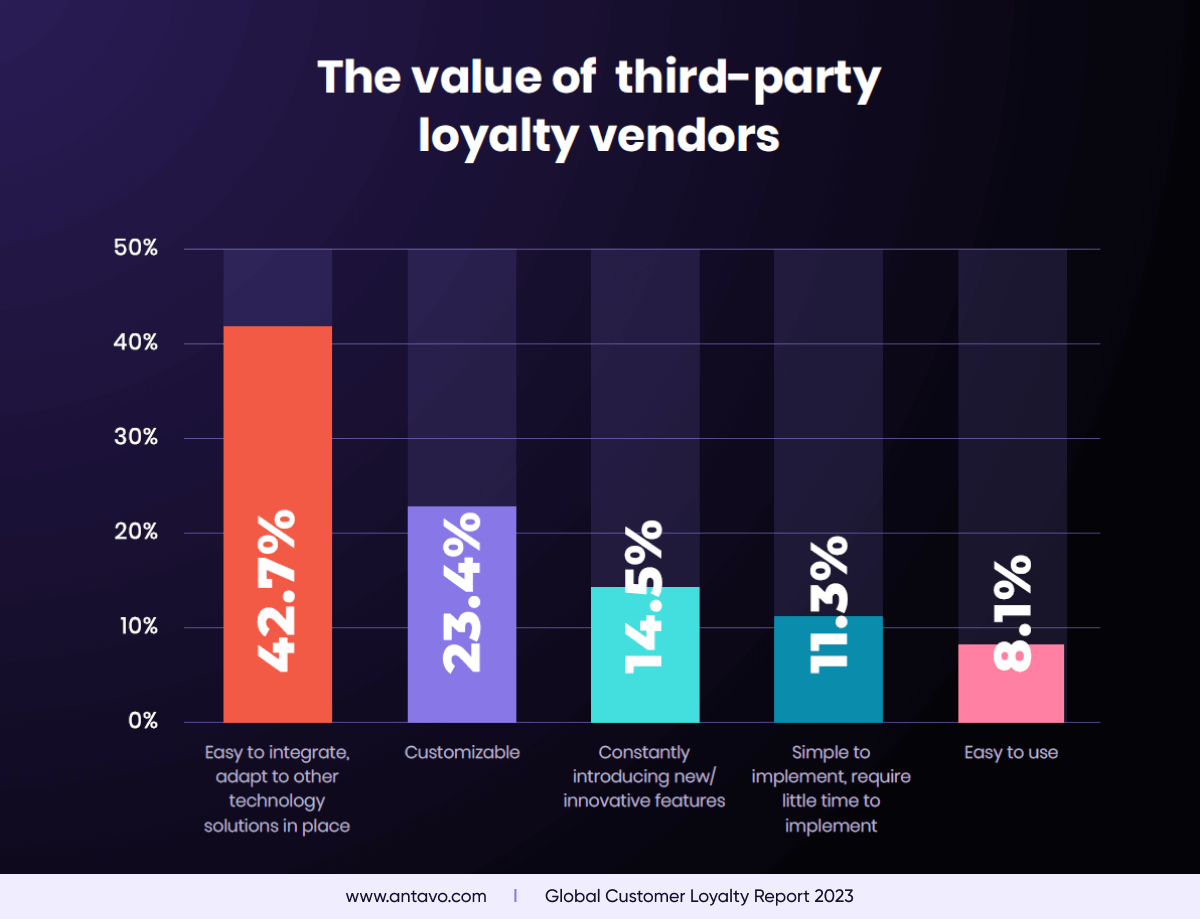
Finding the Right Loyalty Program Provider
Is it worth switching from one type of loyalty program technology to another? That answer depends on your own unique circumstances, but in our Global Customer Loyalty Report 2023, we discovered that 71.4% of program owners that have revamped their loyalty program in the past two years are satisfied with their new program. So making the switch to better technology definitely pays off.
If you’re considering launching (or re-launching) your program with a third-party loyalty program provider like Antavo, here are some best practices to keep in mind when searching for the right vendor:
- Conduct the vendor selection process through an RFP. This will help you clarify your tech requirements and KPIs.
- Alternatively, you can use trusted publications, like Gartner’s Market Guide for Loyalty Management or Forrester’s Wave around Loyalty Program Technologies, as guidance for selecting a vendor.
- Look for a vendor that offers no-code technology, because it will make post-launch program management far easier for your team.
- In order to support your tech vendor, make sure to create a detailed concept document that’s longer than one page.
- If you need help with the concept, hire a seasoned consultant firm or an industry organization like Customer Strategy Network, The Loyalty People or Loyalty360.
- Consider working with a system integrator like EPAM or Acxiom to help make implementation much smoother.
- Don’t forget about security! Capabilities like fraud detection and data protection should be addressed long before the integration phase.
Download our handy little worksheet for a guide on what else you should consider when looking for a third-party loyalty program technology provider.
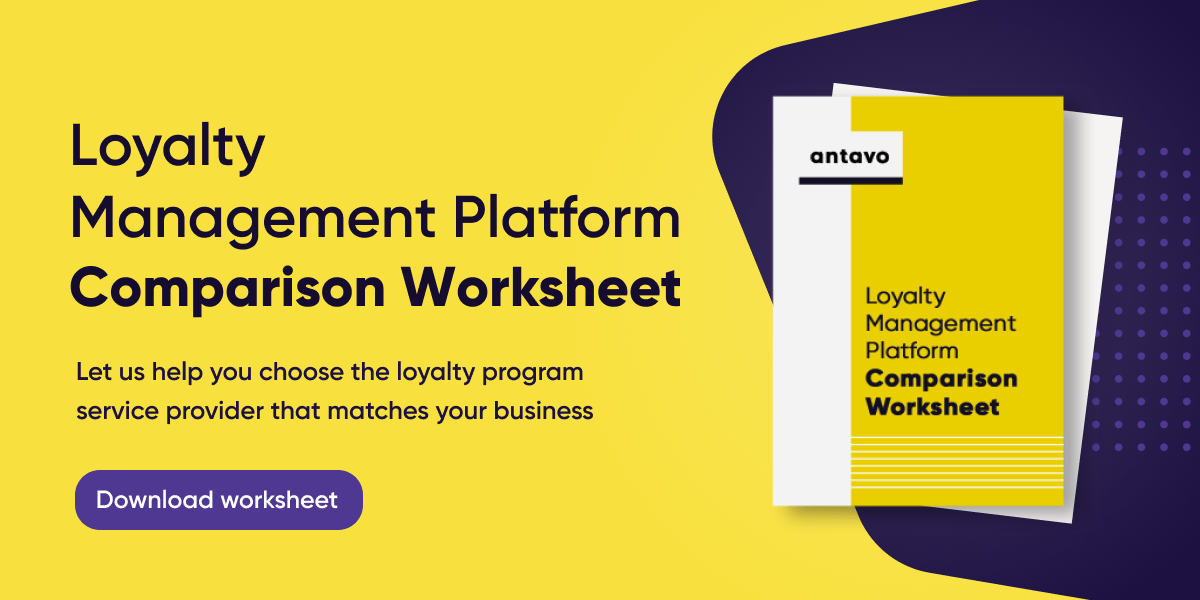
Identifying the Right Loyalty Program Technology Isn’t Easy, But It’s Absolutely Worth It
The search for loyalty program technology starts by taking a deep look at your company’s needs and goals, then coming up with requirements. Then, you have to assemble your team (in house, through an agency, or through a tech vendor), and work out the details. This process is long and difficult, but remember this: 80% of companies that measure the ROI of their loyalty programs reported a positive ROI, earning 4.9x more revenue than what they spend on average — according to our 2023 report.
If you’d like to know whether Antavo is the right loyalty program technology for you, our experts are more than happy to take you through a product demo. Feel free to book a demo or include us in your RFP.
Meanwhile, don’t forget to download Antavo’s Customer Loyalty Report, an in-depth report that showcases current trends, as well as up-and-coming trends that will shape the future of loyalty. This report will help you navigate the world of next-gen loyalty programs.
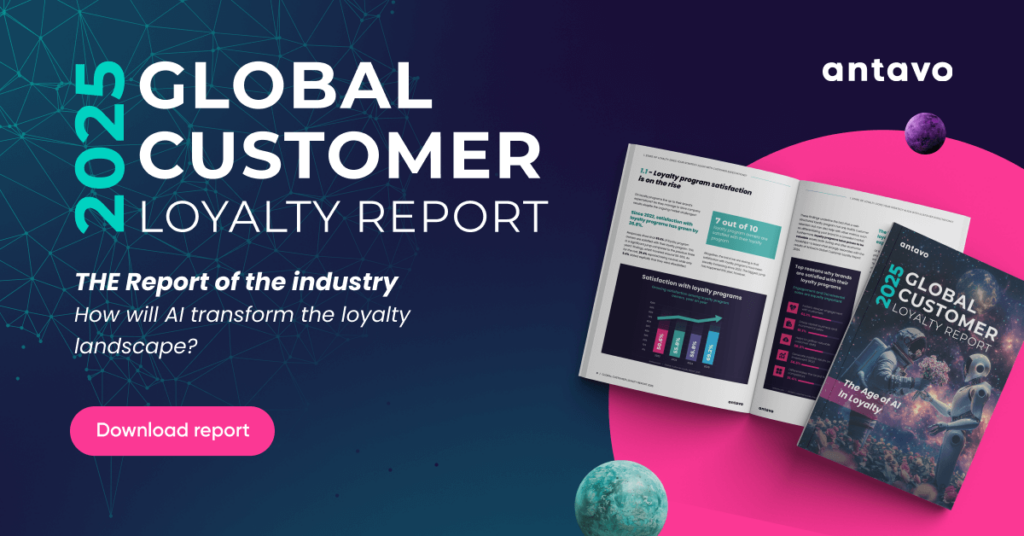
Jess is a Loyalty Program Analyst and a Certified Loyalty Marketing Professional - CLMP, helping companies learn more about customer retention strategies, so they can launch successful loyalty programs. She has been writing about loyalty since 2016. Jess also enjoys ballet, travel, learning languages, and carrying out secret missions for loyalty intel.
